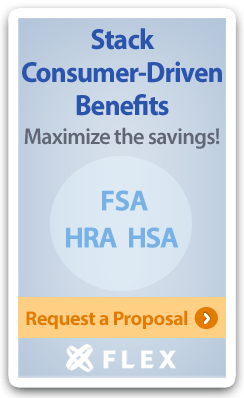Benefits Buzz
Carryover, Grace Period, and Run-Out Period. What's the Difference?

When talking about Health Flexible Spending Accounts (FSAs), you may hear the terms carryover, grace period and run-out period, but what do they mean and how do they differ? Here are some simple explanations of each term.
Carryover
FSAs have historically been known for their “use-it-or-lose-it” feature. In the past, employees had to forfeit any unused funds at the end of the plan year. In October of 2013, the Department of Treasury issued new regulations which optionally allow employers to include a carryover provision to their FSA. This provision allows employees to carry over up to $550 of unused FSA funds from the previous plan year into the following plan year. The carryover provision is also sometimes referred to as the rollover provision.
Carryover funds can be spent at any time during the following plan year. They can even be rolled over again if they are still not spent, but no more than $550 total can carry over into the next plan year. Carryover balances also do not affect the election amount for the following year. So, a participant could carry over $550 and still elect $2,750 for the new plan year, making a total election of $3,300.
Grace Period
Before the carryover provision became available, a grace period provision was made available by the Department of Treasury. This provision was optionally made available in 2007 and was also issued in response to the use-it-or-lose-it feature. The grace period provision essentially extends the plan year for an additional 2 ½ months, allowing eligible expenses to be incurred over a 14 ½ month time period rather than a 12-month time period. For example, an FSA plan year that started on January 1, 2020, and included the grace period provision would allow employees to be reimbursed for medical expenses incurred through March 15, 2021. Any balances remaining at the end of the grace period will still be forfeited.
It’s important to point out that an employer can include the carryover provision or the grace period with their FSA, but not both. An employer can also choose not to incorporate either provision.
Run-out Period
Most FSAs include a period of time after the end of the plan year which allows employees to request a reimbursement for medical expenses that were incurred during the plan year. The run-out period simply gives employees additional time to gather and submit documents and receipts for medical expenses incurred during the plan year. This is especially helpful for employees who incur medical expenses towards the end of the plan year. The run-out period is usually 30, 60 or 90 days. An employer can have a run-out period in addition to carryover or a run-out period in addition to a grace period. Run-out periods are not required, but almost every FSA plan includes one.
Looking for ways to spend down your 2020 FSA balance?
Over-the-counter (OTC) healthcare products are a great way to use up any leftover funds. You can use your FSA to purchase items such as bandages, thermometers, contact lens solution, and first aid kits. You can even get at-home COVID-19 tests! Additionally, the CARES Act, passed by Congress back in March, expanded FSA eligibility for OTC items. OTC drugs and medications no longer require a prescription to be eligible, and menstrual products are now considered eligible as well. It’s now easier than ever to spend every last penny of your FSA election.
Check out FSA Store to shop for eligible items and learn more about what your FSA covers.

